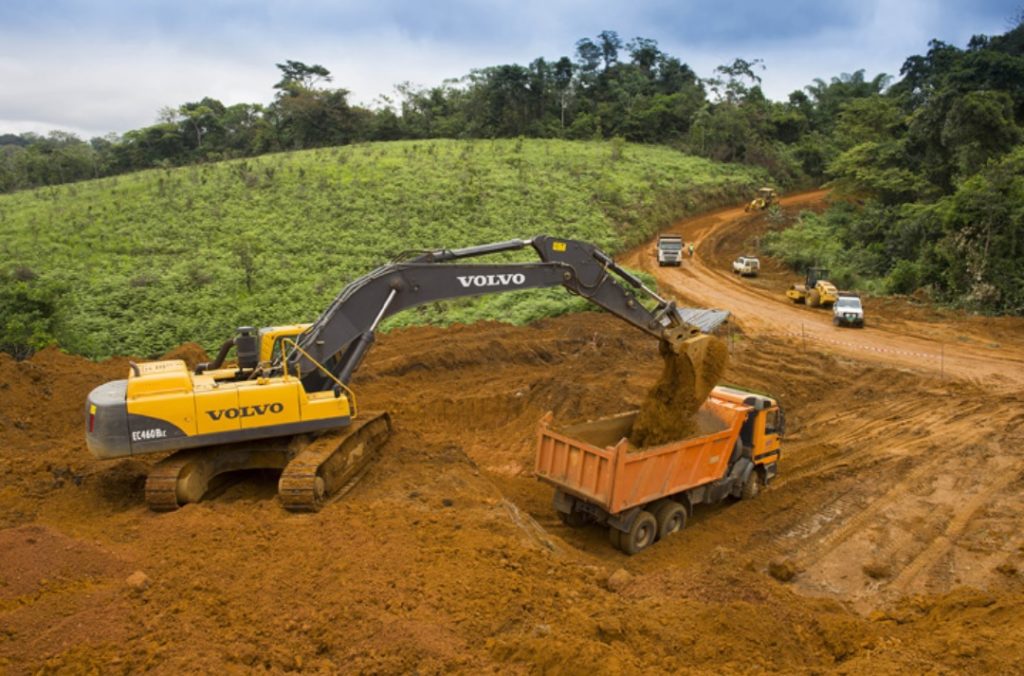Zanaga Iron Ore says a concept study on the viability of using a floating dewatering, storage and offloading (FDSO) port facility shows the potential for a $184 million reduction in capital costs for the 12 Mt/y Stage One development at the Zanaga iron ore project in the Republic of Congo.
Following an approach in 2019 from a leading engineering procurement and construction (EPC) company specialised in the development of floating mooring and operating facilities, in recent months the Zanaga project team has been actively investigating the potential to use an offshore floating port instead of the transhipping solution envisaged in the 2014 feasibility study, the company said. This transhipping solution involved Zanaga’s slurry pipeline terminating at the coast of the Republic of Congo, whereby the slurry material would be dewatered in a coastal based location north of Pointe Noire.
Zanaga is planned as a large scale iron ore mine, processing and infrastructure operation to produce 30 Mt/y of high-grade iron ore (pellet feed) concentrate over a 30-year life of mine, to be developed in two stages. Stage One consists of 12 Mt/y of pellet feed, with the Stage Two 18 Mt/y expansion to 30 Mt/y of pellet feed.
The feasibility study envisaged a slurry pipeline for transport of iron ore concentrate from the mine to the port facilities, with the port facilities and infrastructure for dewatering and handling of the iron ore products located within a proposed third-party constructed port facility.
According to the latest concept study, the floating port solution could provide a number of advantages both technically and economically over previous solutions.
“The solution involves extending Zanaga’s slurry pipeline straight out into the ocean, with significantly reduced land-based facilities,” the company said. “The pipeline would run along the ocean floor to a fixed mooring point where the pipeline would connect to the FDSO vessel.”
The slurry would be processed onboard by a dewatering plant and the pellet feed concentrate would be stored within the vessel. Offloading facilities would be built into the vessel to allow the FDSO to load cape size vessels directly. By utilising the FDSO, Zanaga’s materials handling steps would be reduced to only three phases, providing significant efficiencies and a more seamless operation, the company said.
The FDSO evaluation process has been led by Paterson & Cooke, leading experts in slurry pipeline design and engineering. P&C has completed a concept level report involving a comparison of the three port solutions available for the Zanaga project, namely transhipping, deep water port, or the new FDSO port, Zanaga said.
“The results of the investigation have been very positive from a technical and economic perspective,” the company said. “Potential has been indicated for a $184 million reduction to total capital costs of the 12 Mt/y Stage One project, resulting in a reduction of total capital cost from $2.219 billion to $2.035 billion.”
While the study was conceptual in nature, it compared favourably with the transhipping and deep water port options the company had previously weighed for the project, it said. The capital cost associated with the FDSO was $111 million, compared with $295 million for the transhipping option and $899 million for the deep water port.
On top of this, operating costs are expected to be maintained at around $6.50/t due to previously high transshipping costs being substituted by a lease cost to the EPC contractor providing the solution, it said.
Clifford Elphick, Non-Executive Chairman of Zanaga Iron Ore, said: “This evaluation exercise demonstrates the clear potential of a floating port facility to enhance significantly the economics of the Zanaga project through the reduction of upfront capital costs and enhanced internal rate of return.
“In addition, there is potential to achieve significant ancillary technical benefits such as reduced environmental impact, elimination of dredging, and significant flexibility on coastal route selection.”
On top of this development, Zanaga said the project team had made progress on evaluating the early production project (EPP) potential of the asset.
Having ditched plans to explore a logistics route through Gabon, it said the team was now evaluating a range of capacities from 1-5 Mt/y involving optimising process plant design and reviewing in-country logistics solutions for an upgraded truck and rail solution using upgraded road and rail infrastructure within the Republic of Congo.
“In terms of power supply, heavy fuel oil is available in RoC in sufficient quantities to support such a project and pricing has been obtained from the national oil company allowing the project team to evaluate the viability of such an option to support the EPP’s power consumption requirements,” the company said.
“In addition, potential hydropower sites have also been identified in the area of the future mine. One site located 70 km to the north on the Ogooué river site seems promising, with a potential capacity of 20 MW to 40 MW.”
A detailed study is underway to further evaluate the potential of the site, it added.
“The project team continue to evaluate the potential for the EPP to operate as a standalone project, or as an initial pathway to production during the construction period of the 30 Mt/y staged development project,” it concluded.










